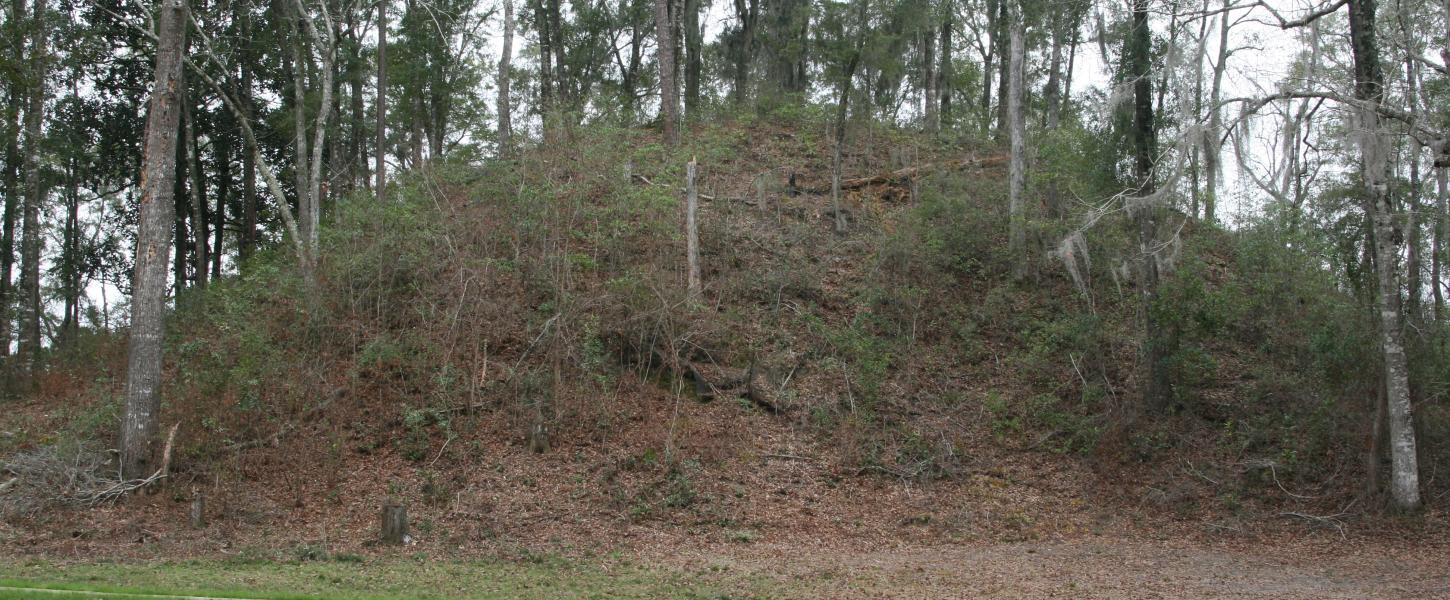Native American Ceremonial Mound

The Letchworth-Love Mounds were discovered in 1932, but not officially recorded until 1975.
Letchworth was built over the course of hundreds of years, establishing a deep rooted culture in the Tallahassee and Monticello areas. The largest mound is estimated to have been made using 27 million gallons of soil, mixed with shells, and encased in clay and was completely built by hand one basketful at a time. It is approximated that it took at least six-million trips from a nearby pit.
Researchers believe the mound served as a capital monument for the social, political and religious spheres of Weeden life. The site is listed on the National Register of Historic Places.
Artifacts have been recovered from as far back as 12,000 years, and archaeological research indicates the mounds were built between 200 - 900 AD by members of the Swift Creek and Weeden Island Native American cultures, a group of Native Americans who lived in North Florida between 450 and 900 A.D. Authorities however, have suggested the mounds were more of the style of Mississippians who were part of a later culture.
The Lake Jackson Mounds Archeological State Park, north of Tallahassee is believed to be a later, separate settlement. These all were relative new comers compared to the Paleoindians.
Paleoindian tool marks were found on a mastodon tusk from the Aucilla River bottom and a stone point was found in the skull of a Bison antiquus raised from the Wacissa River bottom. Bison antiquus is believed to have disappeared around 10,000 years ago and the mastodon tusk was carbon dated as 12,000 years old.
At the peak of its functions, the mound complex had about ten smaller mounds and two plazas. The mound itself had two side platforms, an earthen ramp and a top styled similar to Meso-American structures. The main village was to the south of the complex near Lloyd Creek. Other high ground near water in the county holds evidence of at least temporary camps and towns.